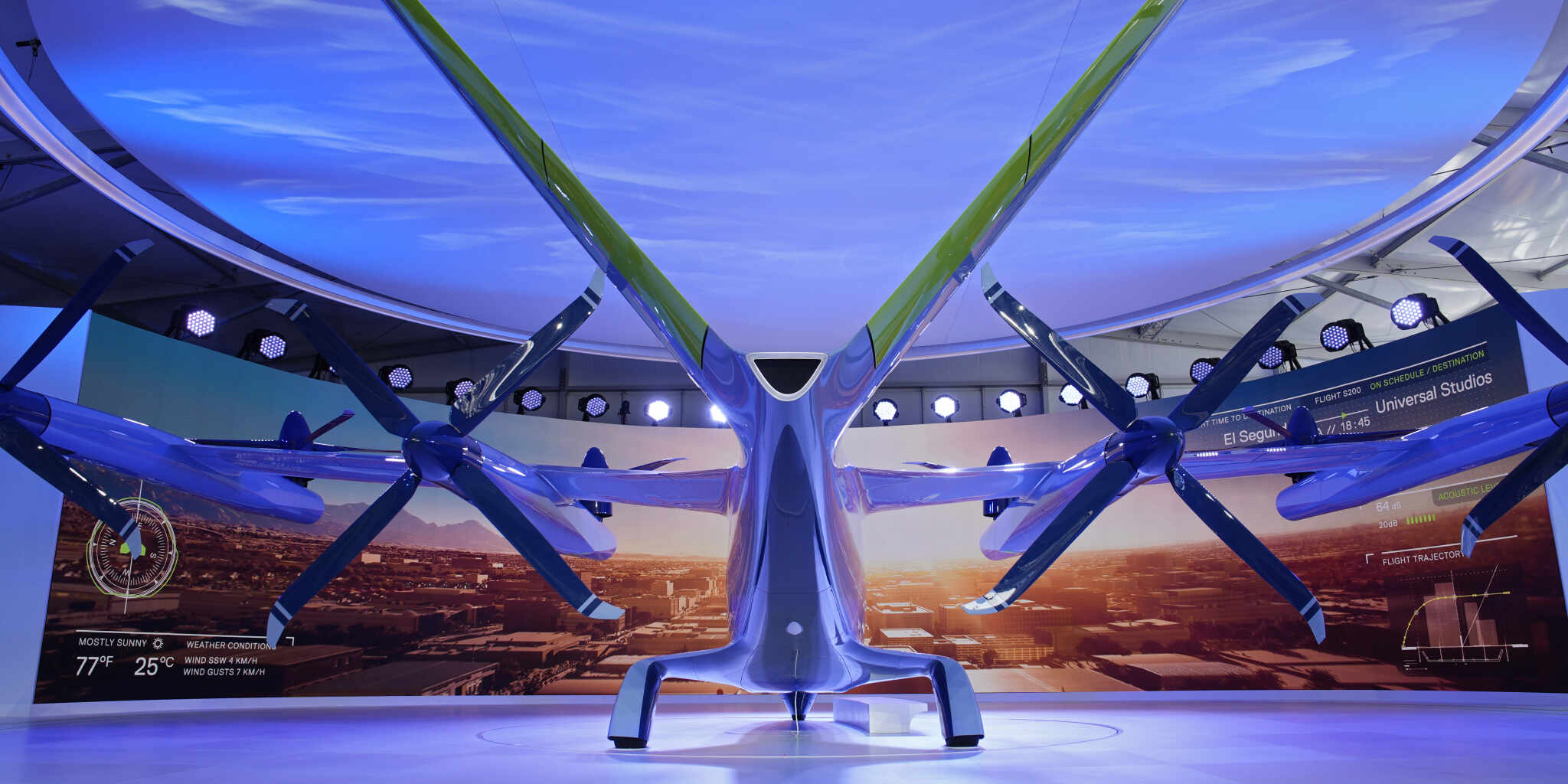
At the Consumer Electronics Show in Las Vegas, the Korean company unveiled a vertical take-off aircraft capable of carrying four passengers. The vehicle is expected to be certified by US authorities for commercial services in 2028.
Hyundai's air mobility wing debuts its second-generation eVTOL aircraft, the Supernal S-A2, targeting production and first flights in 2028. Hyundai has been working on the eVTOL for a few years now. You may remember at CES 2020 it first debuted the Hyundai Urban Air Mobility SA-1 in partnership with Uber Air.
This year, the company showed off a VertiPort, or a concept for the places in Los angeles where you could catch an air taxi. As a division of Hyundai Motor Group, the company is not just developing an aircraft. It’s creating a mobility solution.

The battery powered aircraft features space for 4 passengers, their luggage and a pilot within its V-tail fuselage.
The company says its aircraft will “operate as quietly as a dishwasher,” emitting 65 decibels in vertical takeoff and landing phases and 45dB while cruising horizontally.
Supernal is one of a handful of companies that wants to replace noisy, polluting helicopters and regional aircraft with all-electric, multi-rotor vehicles designed for short hops between nearby airports or quick trips from an urban downtown to a local airport.
The company’s designers and engineers also made the interior modular, including the ability to replace the battery as technology improves.
Hyundai isn’t the only global company to see visions of small electric aircraft buzzing over cities. Stellantis, which owns Jeep, Chrysler, and Dodge, is committed to mass-producing air taxis for Archer Aviation. United and Delta airlines are also invested in the technology, as are Boeing and NASA.
Sources: techcrunch.com; theverge.com
